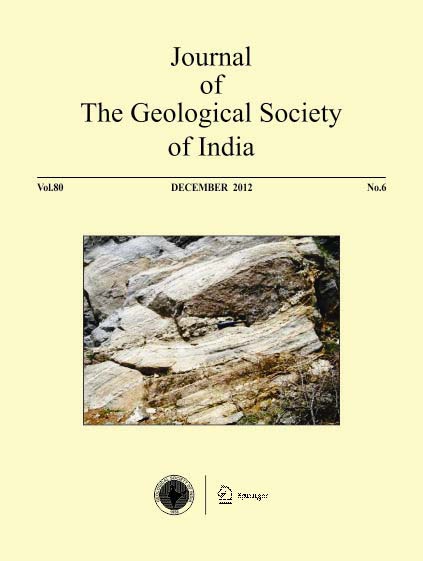3D Electrical Resistivity Tomography Survey for the Basement of the Abeokuta Terrain of Southwestern Nigeria
Keywords:
Resistivity, Tomography, 3D Models, Electrode Spacing, Cross-Diagonal, Lithologies.Abstract
Geological structures are 3-Dimensional (3D) in nature, thus 1-Dimensional and 2-Dimensional surveys cannot adequately model them. However, sophisticated 3D survey equipment are very expensive. In this study, a singlechannel ABEM SAS 300B Terrameter was used to obtain 3D models of the subsurface.
This survey was carried out at three different locations within Abeokuta, a basement complex terrain of southwestern Nigeria. The area falls within longitudes 3.35° and 3.38° East and latitudes 7.22° and 7.46° North respectively, with coordinates of 2550.0 m North and 1724.2 m East. A manual 4-electrode system was used in the Electrical Resistivity Tomography survey at the three locations. Each location was marked into 7 by 7 square grids with 1 m, 3 m and 5 m unit electrode spacings in succession. The pole-pole array was used with the two remote electrodes placed at distances of 23 m, 40 m and 65 m from the grids of 1 m, 3 m and 5 m unit electrode spacings respectively, to reduce their telluric effects on the measured apparent resistivity values. To reduce survey time consumption, the cross-diagonal survey method was adopted. The data obtained were analysed using a 3D inversion software called RES3DINV and 3-Dimensional models of the subsurface were also generated using Slicer Dicer graphics software.
The study revealed layers extending to depths of 7.75 m, 23.2 m and 38.7 m for unit electrode spacings of 1 m, 3 m and 5 m respectively. It revealed resistivity values ranging from 7.3 Ωm to 300 Ωm for electrode spacing of 1.0 m; 13.8 Ωm to 200 Ωm for electrode spacing of 3 m and 3.9 Ωm to 200 Ωm for electrode spacing of 5 m at the first location. At the second location, it revealed resistivity values ranging from 0.53 Ωm to 120.0 Ωm for electrode spacing of 3 m and 0.30 Ωm to 100 Ωm for electrode spacing of 5 m. For electrode spacings of 1 m, 3 m and 5 m, resistivity values ranging from 6.1 Ωm to 600 Ωm, 12 Ωm to 600 Ωm and 0.85 Ωm to 1700 Ωm were obtained respectively at the third location.
Generally, this study revealed lithologies composed of lateritic soil, sand, sandstone, sandyclay, clayeysand, weathered rock, fractured rock, clay and fresh basement; to a depth of about 39 m. Also, location 3 was discovered to have good groundwater prospects; though not as good as for locations 1 and 2.
Downloads
Issue
Section
Downloads
Published
How to Cite
References
AKINSOLA, O.K. (2004) Forced eviction and uncertain future: The travails of the evacuees on UNAAB land. Dissertation submitted to the Department of Urban and Regional Planning, Faculty of Social Sciences, University of Ibadan.
CHRISTENSEN, N.B. and SORENSEN, K.I. (1994) Integrated use of electromagnetic methods for hydrogeological investigations.Proceedings of the Symposium on the Application of Geophysics to Engineering and Environmental Problems, March 1994, Boston, Massachusetts, pp.163-176.
DAHLIN, T. and OWEN, R. (1998) Geophysical investigations of alluvial aquifers in Zimbabwe. Proceedings of the IV Meeting of the Environmental and Engineering Geophysical Society (European Section), Sept. 1998, Barcelona, Spain, pp.151-154.
FOLARIN, G.M. (2011) Three-Dimensional Electrical Resistivity Tomography (ERT) Survey of a Typical Basement Complex Terrain.A Dissertation submitted to the Department of Physics, College of Natural Sciences, University of Agriculture, Abeokuta. Unpubld. MSc. dessertation Thesis in Physics.
GRIFFITHS, D.H., TURNBULL, J. and OLAYINKA A.I. (1990) Two-dimensional resistivity mapping with a computer-controlled array. First Break, v.8, pp.121-129.
GRIFFITHS, D.H. and BARKER, R.D. (1993) Two-dimensional resistivity imaging and modeling in areas of complex geology. Jour. Appd. Geophys., v.29, pp.211-226.
IBIKUNLE, O.K. (1998) Planning and development of tertiary institutions in Nigeria: A case study of University of Agriculture, Abeokuta, UNAAB. Professional Diploma in Town and Regional Planning of The Polytechnic, Ibadan, Nigeria.
KOGBE, C.A. (1975) Geology of Nigeria. Macmillan Publisher, pp.20-35.
LOKE, M.H. and BARKER, R.D. (1996b) Practical techniques for 3D resistivity surveys and data inversion. Geophysical Prospecting, v.44, pp.499-523.
LOKE, M.H. (2000): Electrical imaging surveys for environmental and engineering studies. www.heritagegeophysics.com.
LOKE, M.H. (2004) Tutorial: 2-D and 3-D electrical imaging surveys.
NYQUIST, J.E., BRADLEY, J.C. and DAVIS, R.K. (1999) DC resistivity monitoring of potassium permanganate injected to oxidize TCE in situ. Jour. Environ. Engg. Geophys., v.4, pp.135-148.
OJELABI, E.A., BADMUS, B.S. and SALAU, A.A. (2002) Comparative analysis of Wenner and Schlumberger Methods of Geoelectric Sounding in subsurface Delineation and groundwater exploration - A case study. Jour. Geol. Soc. India, v. 60, pp.623-628
OKWUEZE, E.E. and EZEANYIM, V.I. (1991) Geophysical exploration for fresh groundwater sources in a saline shale area. AJST Series B., v.5.
RITZ, M., PARISOT, J.-C., DIOUF, S., BEAUVAIS, A. and DIONE, F. (1999) Electrical imaging of lateritic weathering mantles over granitic and metamorphic basement of eastern Senegal, West Africa. Jour. Appld. Geophys., v.41, pp.335-344.

 B. S. Badmus
B. S. Badmus


